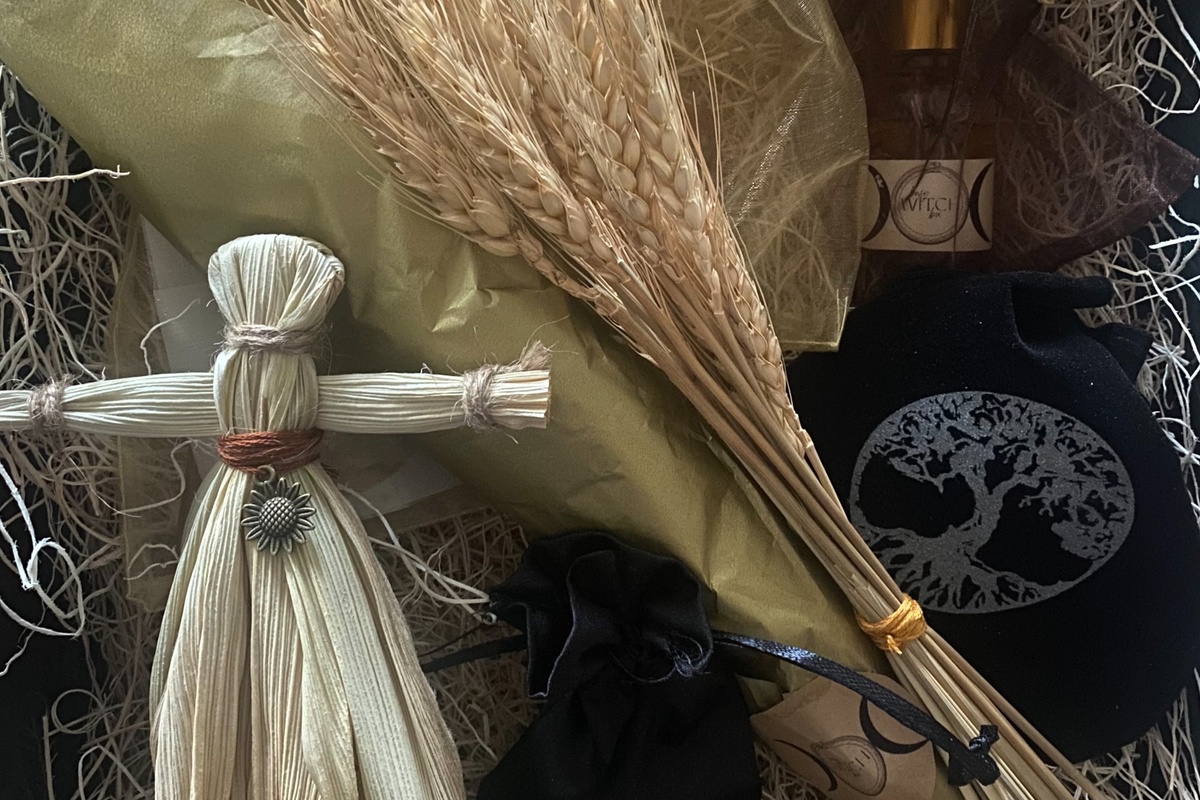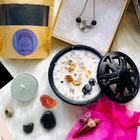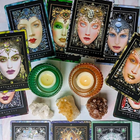Your Year-Round Guide to Pagan Holidays
Updated by Frankie Larson
The wheel of the year is an important symbol in Pagan tradition and the basis for Pagan holidays. It is an annual cycle of seasonal festivals , with the sun’s equinoxes and solstices leading the division of the year into four parts and their midpoints. The wheel is made up of eight unique celebrations which are deeply tied to the seasons and all involve celebrating with a holiday full of rejoicing, festivity, food, and ritual.
Yule
Winter Solstice, December 21st
The wheel of the year begins in the darkest part of the year: the winter solstice. The festivities for this holiday are centered around light, hearth, and home and include feasts, bonfires, and decorating with traditional plants such as holly and mistletoe. Decorating evergreens with trinkets for the spirits of the trees is widely practiced and a yule log is made each year and burned in the first bonfire of the year.

Imbolc
February 1st through 2nd
Imbolc is also known as Saint Brigid’s Day, and she is the goddess of fire, blacksmiths, springs, poets, motherhood, fertility, and abundance. This time of the year, halfway between the winter solstice and spring equinox, is the awakening of the natural world. This is the time for preparing ** beds for sowing seeds **and celebrating the first shoots of spring. To celebrate Imbolc, dolls are made of corn and Brigid crosses are made of straw, as it is the time to start cleaning the garden bed of all the golden husks from last year.
**Ostara **
Celebrated on the Spring Equinox, March 20th
Spring has arrived! Ostara and Easter are named after Eostre, the goddess of spring, new beginnings, and fertility.** This is the time to do your spring cleaning! **Open your windows, open your doors, and sweep out and smoke cleanse all of the stagnancy of winter. Focus on the balance that equinoxes bring. Breathe new life into your home, days, and routines, and celebrate this holiday by decorating eggs to symbolize the fertility of spring and planting new life with your intentions of growth for the year.

**Beltane **
Celebrated the First of May
Beltane is the Gaelic Mayday festival, which celebrates the end of spring and the beginning of summer with bonfires, dancing, maypoles, and warmth. Beltane is all about celebrating** fertility and the ripeness of the year. **
**Litha **
Celebrated on the Summer Solstice, June 21st
Also known as Midsummer, Litha is the summer solstice, celebrating the longest, hottest days and shortest nights. This is the other side of the Yule battle for light and darkness: bonfires are also lit on this holiday to assist the sun in its eternal battle against the dark. Gardens are beginning to be fruitful, and it’s the perfect time of year to make flower crowns and bouquets.

Lammas
Celebrated August 1st
Lammas is the first of three harvest festivals and the turning point from summer into autumn. This is celebrated by offering the first fruits of the harvest , which in turn starts the harvest season: it is not good luck to harvest food before Lammas! Celebrate this holiday by thanking the earth for the coming harvests, baking bread, and by making decorative crafts out of herbs and wheat stems.
Mabon
Celebrated near the Autumn Equinox, September 21st through the 29th
Mabon (pronounced may-bon) is the second of the harvest festivals and the true celebration of autumn . This is to honor the changing of the seasons and focuses on the balance between light and dark, similar but opposite to Ostara. This is the time to give offerings to the trees from your harvest, pick apples, and have feasts and fires with your community.
**Samhain **
Celebrated Sunset October 31st through Sunset on November 1st
The final harvest festival, Samhain, is when the darkness starts to win the eternal fight with the light . This is when the** doors to other worlds are opened **and is the time to commune with the dead. It is celebrated with big gatherings, fires, and feasts before the coming winter. All of the harvest fruits such as apples, pumpkins, and nuts are eaten during this time, the cattle are brought down from the summer pastures. Everything left in the harvest at this time is stored for the winter.















